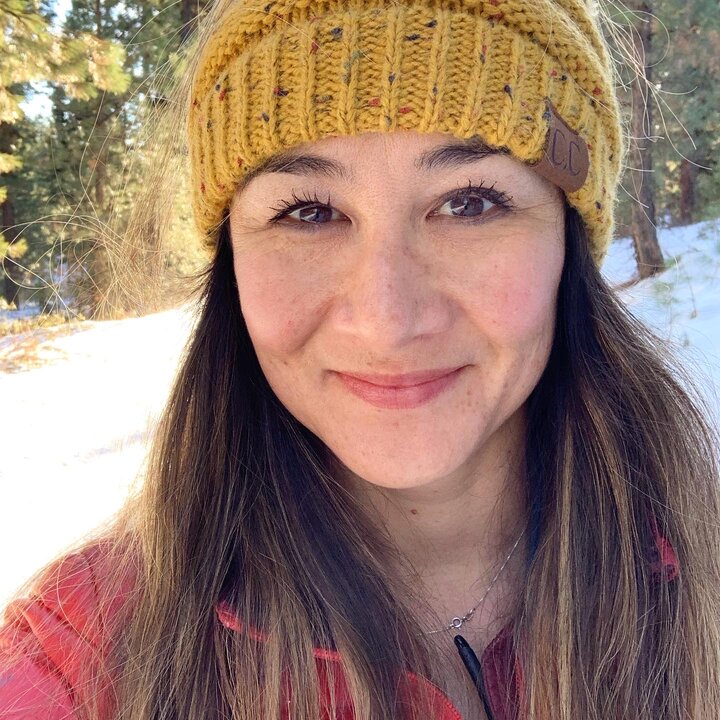
Kim Cross is the author of “What Stands in a Storm,” a narrative nonfiction account of the biggest tornado outbreak on record. A full-time freelance writer, she has bylines in Outside, Bicycling, Nieman Storyboard, and other magazines. When she’s not writing, she’s mountain biking, fly fishing, or exploring some glorious place without phone reception in Idaho. Her nonfiction narrative, “Noel + Leon, a True Story from the Middle of Somewhere” won the Gold Lowell Thomas Award for foreign travel reporting from the Society of American Travel Writers, was named as one of the Best of 2020 in the Sunday Longread and was included in David Brooks’ annual Sidney Awards. Her most recent piece, “My Month of Doing 100 Wheeliea Day,” appeared in Outside.
What’s the most important lesson you’ve learned as a writer?
That “no” doesn’t always mean “no.” Sometimes it just means “Not right now.”
I’ve come to realize that so much of landing a pitch has to do with timing: what’s going on in the news and the world; what the editors have on their lineup; the gestation of a story that’s still unfolding in real life. I wrote a true crime book proposal that almost sold in 2014 (the deal fell through). I was disappointed, but didn’t throw it out entirely, because my gut said the timing wasn’t right. Today, the market is way different for true crime is very different, so I’m reconsidering that story.
I’ve found that sometimes a story can’t be rushed. It almost feels like it has a will of its own, and no matter the writer’s agenda or skill, it can’t be written until the story is ready. I know this sounds a little woo-woo, but my instincts on this have almost always been right. I have pulled eight-year-old story ideas out of a folder named “Rejected” and sold them when the time and venue and fit was just right. I guess the hard part is knowing which ideas are worth resurrecting and which should stay in the “rejected” folder.
What has been the biggest surprise of your writing life?
That my non-writing life would intersect with my writing life in such unexpected and integral ways. J-school instilled the belief that it was unprofessional or even narcissistic for writers to put themselves in the story. But some of my most successful stories—not only in terms of professional recognition but responses from readers who related—have been personal essays. When an essay about fishing with my late father was selected for Best American Sports Writing, I was flabbergasted: I didn’t know fishing was a sport, and had never considered sports writing, despite being a competitive athlete since the age of 9. This also opened the door to a niche that had never even occurred to me, and made me realize an expertise I never even knew I had. Now I write quite a lot about bicycling and fishing—two passions that don’t feel like work to me!
If you had to choose a metaphor to describe yourself as a writer, what would it be and why?
One of the first things that came to mind is a home-builder. Everyone does it differently, but for me, a narrative starts with a blueprint: a plan for the story structure. And, as with building a house, the plan often evolves as the product starts to take shape. After I lay the foundation and frame the walls (ie complete the rough draft) I do a walk-through to see if the rooms are in the right place. If not, this is the time to tear down walls, move windows, and decide you don’t need that extra room. Only then do I start fleshing out the story, hanging drywall and mudding over the seams (which can be an exquisitely frustrating process). Last comes round after round of polishing: adding trim and paint colors (which sometimes change). Those last rounds of finishing touches—word precision, activating verbs, tightening prose, tinkering with cadence and flow—are when the magic happens.
For me, narrative structure—the sequence of scene, summary, and exposition—is the foundation of a successful story. When a house is well designed, a stranger can walk in and, without help, figure out where to find the bathroom or the kitchen. Likewise, a story should keep the reader feeling effortlessly oriented.
What’s the single best piece of writing advice anyone ever gave you?
Mike Wilson, whom I consider my Jedi Master, taught me the importance of restraint. Particularly when writing emotional stories, where there’s a risk of being maudlin or cliche. The bigger the emotion, the smaller you need to write. My personal measure of success for most stories is whether it makes a reader feel something, so I try to stir up a universal emotion through details so concrete and singular that they’re the antithesis of cliche. Instead of describing the emotion, try, as Hemingway advised, to write “the sequence of motion and fact which made the emotion.”